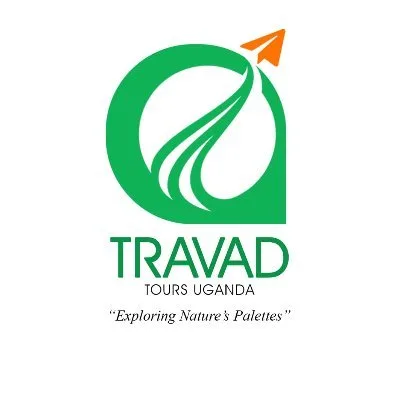If you’ve spent any time scrolling through Instagram, TikTok, or YouTube, you’ve probably seen influencer marketing in action.
Whether it’s a fitness mentor sharing their favourite protein powder or a beauty coach raving about a new skincare product, influencers have become a powerful force.
But what exactly is influencer marketing, and why is it becoming popular? Let’s dive into this exciting trend, break it down into simple terms, and explore why it might be the next big thing for your brand.
What Is Influencer Marketing?
In its simplest form, influencer marketing is about partnering with people who have a strong following online to promote your products or services.
These influencers could be anyone from a celebrity with millions of fans to a niche expert with a smaller but highly engaged audience.
The magic lies in how influencers connect with their followers. Unlike traditional ads, which can feel pushy or impersonal, influencer recommendations come across as authentic and relatable.
When your favorite foodie shares a mouthwatering recipe using a certain brand’s ingredients, it feels less like an ad and more like a friend’s suggestion.
Why Influencer Marketing is Thriving
The world of influencer marketing has evolved significantly over the years. Back in the day, big brands would only team up with celebrities or mega-influencers.
But now? It’s all about micro and nano-influencers; everyday people with smaller but highly engaged communities.
Here’s why I think this shift is fantastic:
- Authenticity Wins: Micro and nano-influencers often have a closer connection with their followers. Their endorsements feel more genuine because their followers trust them.
- Cost-Effective: Collaborating with these influencers can be more affordable than working with big names, making it a smart move for smaller brands.
- Targeted Reach: They often specialize in niche areas i.e. fitness, sustainable fashion, tech gadgets; which means you can reach a highly specific audience.
But it’s not just about picking any influencer and hoping for the best. Brands need to prioritize credibility and authenticity.
Influencer Marketing Beyond Social Media
Here’s an interesting twist: the rise of the metaverse is creating brand-new opportunities for influencer marketing. Virtual influencers and immersive online experiences are pushing the boundaries of what’s possible.
Imagine your favourite influencer hosting a virtual shopping spree or promoting a brand through a custom-built gaming experience.
Does this mean traditional social media influencer marketing is dead? Absolutely not! Platforms like Instagram and TikTok remain dominant, but staying ahead in this fast-evolving space requires creativity and adaptability.
Why I Believe in Influencer Marketing
I’m a big fan of influencer marketing because it’s more than just a sales tool. It’s a way to connect with people. When done right, it doesn’t feel like marketing at all.
It’s about building trust, sharing stories, and making people excited about what you offer.
One of my favourite examples is small businesses using local influencers to promote their products. These partnerships feel personal and make a real impact, especially when the influencer is genuinely passionate about the brand.
It’s proof that you don’t need a million-dollar budget to succeed.
What Makes Influencer Marketing Work?
If you’re thinking about giving influencer marketing a shot, here are my top tips to get it right:
- Focus on Values, Not Just Numbers: Don’t get dazzled by follower counts. Look for influencers who align with your brand’s values and have meaningful engagement with their audience.
- Set Clear Goals: Are you looking to boost brand awareness, drive sales, or launch a new product? Having clear objectives will guide your strategy.
- Be Authentic: People can spot a fake endorsement from a mile away. Work with influencers who genuinely love your product and can integrate it naturally into their content.
- Measure Results: Track metrics like engagement, reach, and conversions to see what’s working and refine your strategy over time.
- Think Long-Term: Instead of one-off collaborations, aim for lasting partnerships. Building relationships with influencers can turn them into loyal brand advocates.
Mistakes to Avoid
Not everything about influencer marketing is smooth sailing. Here are a few common pitfalls and how to dodge them:
- Ignoring Engagement Rates: High follower counts mean nothing if the audience isn’t engaged.
- Skipping Research: Always vet influencers to ensure their values align with yours. A mismatch can damage your brand’s reputation.
- Overlooking Authenticity: Consumers are smart. If an influencer seems insincere or disconnected from your brand, it won’t resonate.
- Failing to Disclose Sponsored Content: Transparency is key. Be upfront about partnerships to maintain trust.
Why You Should Start Now
The influencer marketing industry is booming, with its value projected to hit $22.2 billion by the end of this year. Whether you’re a small business or a big brand, there’s a spot for you in this space.
The beauty of influencer marketing is its versatility. From big campaigns to small, localized efforts, it’s a tool that can adapt to your needs and budget.
The key is to start small, learn from your experiences, and stay open to new ideas.
Wrapping Things Up
So, if you’ve been on the fence about trying influencer marketing, take the leap. It’s not just a trend. It’s a powerful way to connect with your audience in a meaningful and impactful way.
Remember, the heart of influencer marketing isn’t about selling; it’s about relationships. Whether you’re working with a mega-influencer or a nano-creator, focus on genuine connections, and the results will follow.










